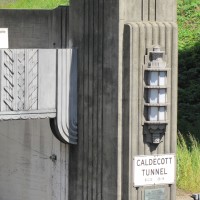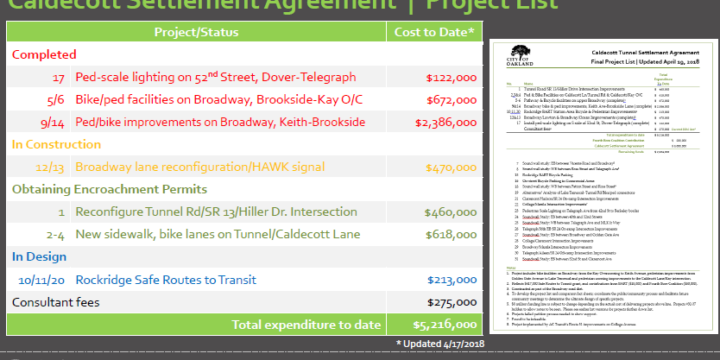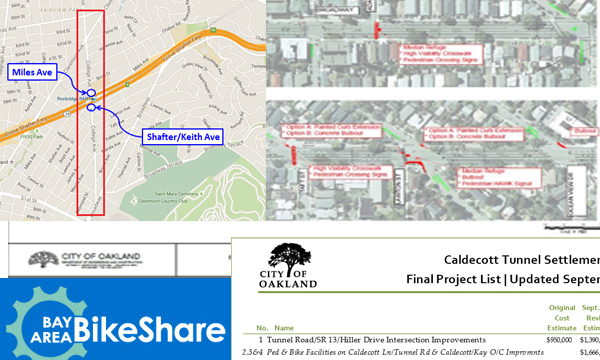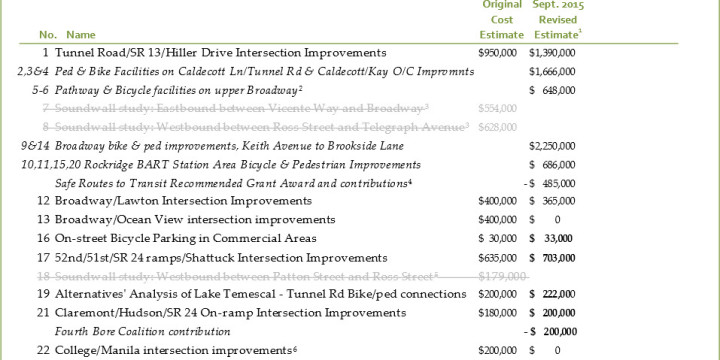Caldecott Settlement Project Costs Coming in Over Budget

–reprinted from the Rockridge News
City of Oakland staff and their consultants are well along designing many of the highest ranking projects on the Caldecott Settlement project list.
Unfortunately, as the detailed design of construction plans has unfolded, corresponding cost estimates have grown from the initial costs used to develop the list, in some cases significantly.
This list was developed in 2010 and 2011 through an extensive public process that included three two-hour walk audits and multiple stakeholder and public meetings. The process was iterative, with costs estimated based on the conceptual designs supported by the community. Through the ensuing years, city staff has met with the public and Caltrans to refine project designs, including getting a better understanding of what would be entailed in the soundwall studies (projects #7-8 in the final project list below, right).
Design work on eight of the capital projects at the top of the list is underway (projects 1-6, as well as 9 and 14 as a combined project) and is about 65 percent complete.
Projects #7-8, the soundwall studies, are the subject of a local petition drive. With this information, the city’s engineers have recalculated the expected cost to construct these projects as shown in the project list.
In all cases, costs have increased, meaning that the $8 million settlement with Caltrans will not go as far toward funding projects as originally projected.
Several factors have contributed to this situation:
- Projects in the hills require more and taller retaining walls than originally envisioned.
- As the economy has improved, construction costs have escalated.
- Caltrans has added the cost of its oversight – estimated at $150,000 per study – to the price tag of each soundwall study.
Matching funds from other sources could help offset some of these overruns. The city is applying for a county-wide Safe Routes to Transit grant to help fund some projects, and the Fourth Bore Coalition, with its own settlement from Caltrans, is considering helping to fund one or more of the projects.
This approach can work for capital projects near frequent transit, a current priority of funding agencies, but outside sources will not likely fund capital projects farther from the Rockridge and MacArthur BART stations, or planning and study work of any kind.
With project plans at 65 percent completion, the city has a better idea of project costs than it did at the conceptual stage; however, until construction bids are received on projects that are 100 percent designed, we will not know the actual cost of any of the projects. With that said, the total cost of the high-ranked projects is unlikely to come down.
Beyond looking to outside funding sources, the only way to ensure that as many projects as possible are built is to make certain only the most viable and important projects to the community are pursued.
For instance, future construction of the soundwalls that would be studied in projects 7 and 8 would have to be prioritized over highway safety projects in Oakland and elsewhere in Alameda County. Soundwall segments in other parts of Oakland have been studied and fully designed since the 1980s and are still not any closer to construction.
More details regarding the design and cost status of the Caldecott projects will be presented at the Thursday, October 17 RCPC meeting, 7:30 p.m., second floor meeting room of the Rockridge Branch Library.
In the meantime, for more information, contact the city’s Caldecott projects consultant, Victoria Eisen, at victoria@eisenletunic.com or 510/525-0220.



